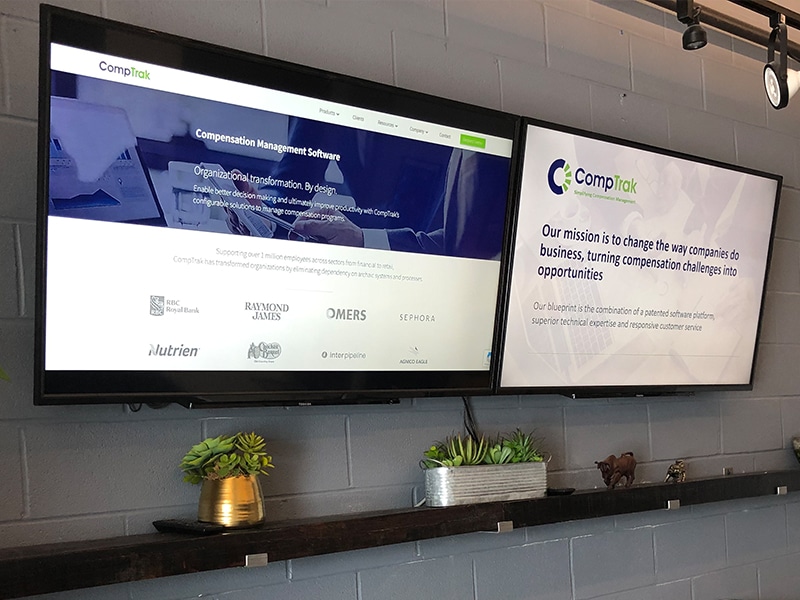Too often, organizations see HR as a purely operational function, rather than a strategic lever. Successful companies, however, are shifting away from this mindset and viewing the role of HR as a strategic one, not purely tactical or operational.
A strategic lever refers to a strategy, function, or initiative that enables or promotes long-term organizational growth. Compensation plays a key role in a company’s growth, as it leads to higher talent attraction, motivation, and retention. With a comprehensive compensation strategy that’s matched to the organization’s goals and delivered via a dynamic, engaging digital platform, companies can successfully take advantage of this often overlooked aspect of HR to drive growth.
Let’s dive into the different ways in which compensation can help businesses grow—and how they can implement a compensation strategy that does exactly that.
Compensation programs attract and retain talent
In today’s war for talent, companies striving for organizational growth need to find innovative ways to attract and retain the right talent to support that growth. A strong compensation philosophy anchored within a forward-thinking program has the power to help organizations secure these top performers—and keep them around.
High-quality candidates are attracted to companies that offer innovative compensation programs which give them a chance to earn more as a result of their high performance. Once part of the team, an engaging scheme will help retain top talent as they are continuously rewarded and recognized for their individual contributions towards strategic growth.
With 96% of employees in a survey stating that compensation is either important or very important to their overall happiness within their roles, it’s vital that businesses home in on this strategy for getting their hands on top talent.
Innovative programs give ownership to employees
Many incentive programs today are backward-looking and communicate results only once they are final. Employees often only receive information on their compensation when they have little or no time to influence the results.
A compensation program that provides real-time information and puts results in context will support employees to drive those results according to whether or not they are on track to reach their goals.
For example, let’s say a marketing executive receives a bonus each quarter based on the number of leads generated. If the employee has no way of knowing whether they’re on track to meet their target throughout the quarter, they are not driven to act to influence performance and meet their goal. These real-time insights go a long way to shape the behavior of an employee, as the person can address a downwards trend earlier on and adjust their actions to hit the metrics.
Providing real-time insights into an employee’s compensation program fits in nicely with the approach of continuous performance management. This is essentially when organizations allow their employees to feel empowered and take control of their development. Continuous, transparent performance feedback allows employees to take charge of their performance and become more engaged and motivated. And when that performance is directly linked to their compensation payout, they’re automatically more driven to hit those metrics.
Compensation schemes can support strategic goals
When designed properly, compensation programs can help organizations reach their strategic and performance goals. These programs should be aligned with the strategic priorities and values of the company.
The metrics being used to drive performance through compensation must directly support organizational growth. They should also be individualized to each role, with certain areas given different weightings. For example, the CEO’s targets would be more heavily weighted on company results, while a customer success manager might be measured more heavily according to product adoption rates.
Let’s go back to the leads generation example: A company shouldn’t value all leads as equal, as low-quality leads may hinder the sales team. So, when incentivizing a marketing team member who’s in charge of lead generation, compensation managers may want to instead measure the number of leads that convert to follow-ups, demos or deals.
As in the example scenario described above, the objectives of roles that align with employee compensation should be clearly defined and cascade upwards to the success of the organization. Compensation managers should ask themselves: What does success look like in this role, and how does it relate to the company’s growth and success? That’s how they get their performance metrics that support business goals while remaining in line with the individual’s performance.
Compensation managers can—and should—iterate on these metrics as time goes on. If an employee is consistently surpassing or missing their goals, for example, they can adjust them to make them more feasible.
In fact, none other than fast-food behemoth McDonald’s has adopted this strategy to help reach its diversity and inclusion goals. The company recently revealed that 15% of executive bonuses are tied to targets around increasing racial, ethnic, and gender diversity within senior management positions.
So, it’s clear that compensation can play a crucial role in driving company goals. How can businesses put this strategy in place?
How to implement a compensation strategy that drives growth
Before getting started, it’s vital to understand that a successful compensation strategy must champion continuous improvement. The program shouldn’t be static or seen as a one-time fix. It’s up to compensation leaders to assess the success of their programs and iterate to optimize them over time based on behavior changes.
Compensation leaders shouldn’t underestimate the importance of communication either. There have been cases of companies that have designed innovative compensation programs but lack the ability to communicate how the employee and company benefit from the program. Organizations that design these schemes then get little to no credit if they can’t share their successes, and put at risk employee support for the program itself.
A dynamic, personalized digital platform will allow companies to share all of a given employee’s compensation information with that person, all year round. The employee gains visibility into how on-track they are to achieving their goals, giving them ownership over their own program. This is a huge jump from the single paper envelope that would usually land on an employee’s desk once every quarter/year, which doesn’t allow them to see the full value of their performance. Companies need to communicate every employee’s compensation plan—and what they need to do to reach those targets—clearly to that person.
Finally, organizations that seek to implement a continuously improving compensation plan need a configurable and flexible compensation management software that allows them to automate processes, make quick changes, and stay nimble. Doing compensation digitally allows companies to make data-informed decisions based on historical information and context, as well as being able to overlay various data points and run different scenarios and models. For example, maybe a compensation leader wants to see how a compensation plan might have paid out according to different metrics—they could do that with a dynamic digital platform. Ultimately, organizations get a complete view in a single platform where compensation can be effectively managed.
Companies should treat compensation programs as an ever-evolving strategy, prioritizing communication on its potential up and down the business, and investing in the right technology to make it a success. By giving compensation the strategic focus it deserves, company leaders are able to unlock a powerful tool to drive organizational growth.















